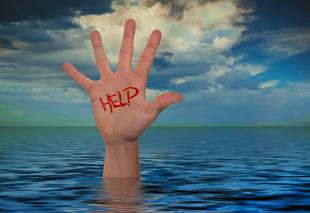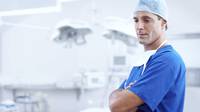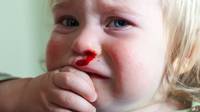
Definition of First Aid
First Aid is the help or assistance given to injured people or those taken suddenly ill before the arrival of a physician.
The principles and practice of first aid are based on practical medicine and surgery, a knowledge of which, in case of accidents or sudden illness, enables trained persons to give such care until medical aid is available.
The first aider's responsibilities don't end when medical aid becomes available. He should stand by after making his report to the physician. It is understood that the first aider should not take the place of a physician.
A good aider should be:
- Observant - should notice all signs.
- Resourceful - should make the best use of things at hand.
- Gentle - should not cause pain
- Tactful - should not alarm the patient
- Sympathetic - should be comforting
- Cheerful - a happy expression inspires confidence.
General Directions for First Aid
A first aider must not apply care he has not been taught. In major (or severe) accidents send for a physician, giving a clear report of what has occured. It is best to give the right information as to where the accident happened, the nature and extent of injury and what first aid measures were given.
In minor accidents send the patient to a physician after first aid has been applied.
Do not fuss. Always keep cool and use encouraging words to the patient.
Directions.
1. Give urgently needed first aid.
Act quickly for injuries where each second of delay is important: a) severe bleeding b) poisoning, and c) stoppage of breathing where artificial respiration helps. While the first aider's time and attention are devoted to the patient, someone else should go or call for a physician.
2. Keep the victim lying down.
Keep the injured person lying in a comfortable position, his head level with his body, until you know whether the injury is serious.
Protect him from unnecessary movement and disturbance. It is good to maintain the body temperature of the victim by wrapping him with a blanket.
3. Check for injuries - examination of victim
Your clues are the story of what happened, the victim's reactions after the accident his own ideas about his injuries and your findings upon examination. The extent of this physical examination should be guided by the kind of accident and the needs of the situation.
If you must move the victim even a short distance before the physician comes, you should first learn what body parts are injured so that you can support them adequately during the transfer. Check carefully for injuries. Recognize that any body part of may be injured and require attention.
Your objective in checking up for injuries is simple: find what body parts are, possibly may be injured. Your first aid should aim to keep these parts immobile.
4. Plan what to do.
Get a physician or ambulance or obtain medical advice by telephone. This should be one of the first moves. Discuss problems with responsible relatives or friends of victims. If helpers are needed, instruct them carefully in their duties. Transport the victim if necessary.
Additional Pointers to Remember in Giving First Aid:
1. If the victim is unconscious, loosen clothing about his neck. If there is no fracture, turn the patient on his right side, maintaining his position by flexing the leg or legs, and place a pillow under the head so that secretions may dip from the corner of the mouth. This will allow good respiration.
2. Do not give fluids to an unconscious or partly conscious person, because these may enter the windpipe. Do not attempt to arouse an unconscious person by shaking him, talking or shouting.
3. Reassure the victim by telling him what first aid steps you are going to take and how they will help him.
4. Be reluctant to make statements to the victim and bystanders about the injuries. It is not within the first aider's prerogative to diagnose, evaluate and predict. Upon questioning from the victim, you can answer that you would rather have the physician give the information. Helpers must given necessary information, however.
5. Following injury, do not lift a gasping person by the belt. This is done very often and may aggravate injuries of the back or internal organs. Gasping is not always caused by insufficient oxygen but may be due to injury of back or chest.
6. With indoor accidents, use judgment about opening windows when weather is cold except when noxious gases are present and may have caused the accident. Indoors or out, the victim has enough air, and cold air may be too chilling.


















